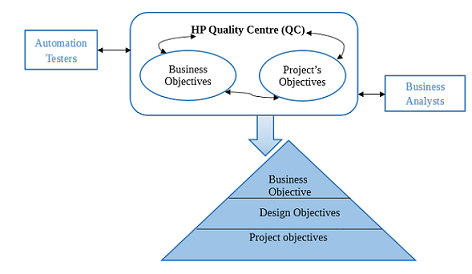

Testing can be performed by non-technical experts as well. Business process testing aims the same. It comprises of involvement of business analyst in the automation testing process. It is basically a role- based model that is a collaboration of experts working with analysts and automation test engineers. A business analyst's job is to define and document the processes, components and process tests from a business perspective.
The automation test engineers are entrusted with the responsibility to deliver those business requirements by efficiently amalgamating the requirements with the test scenarios so as to deliver a project's objective aligned with the business objectives. Therefore the focus of the subject is enable the business analysts to describe a scenario for testing as per an objective.
Quality Centre is an automation tool from HP that facilitates software quality assurance activities like requirements management, management of tests, testing business processes for any application. We take HP's Quality Centre automation tool as an example to perform business process testing.

Business Process Testing can be categorised into the following components:
The reason we have come up with Business Process Tests is that the automation system suffers from few demerits.
The idea behind using Business Process Testing is to overcome the obstacles faced in traditional ways of software testing which deprived manual testers from indulging in automated development environment. Thus the process of Business Process testing induces a habit of a conglomeration of ideas and opinions resulting in a constructive outcome of project's requirements.
HP Business Process Testing is a framework that offers a wide range of reusable test components. It provides a component based testing platform with integrated framework in which one can store reusable components and make changes later.
Modelling the business process makes tests easier to maintain. It is integrated with ALM, Quality Centre and UFT. Business Process Test thus simplifies creation and organization of shareable automated test components.
Let us do a quick analysis of Quality Centre modules:
Features of HP BPT:
After having an understanding of HP BPT, let us look into the general pattern for conducting a typical BPT automation process.
Following are the stages of BPT automation process:
Business Process Testing is an efficient way to build a robust application as we have the minds of the business analysts who are the subject experts and the skill of automation test engineers who have the technical knowledge of automation framework. Together they can share their knowledge, pertaining to their respective domains. A subject expert may put up a new request for a component or may discuss the possibility of any future changes. A subject expert may put up a new request for a component or may discuss the possibility of any future change.
Advertisement: